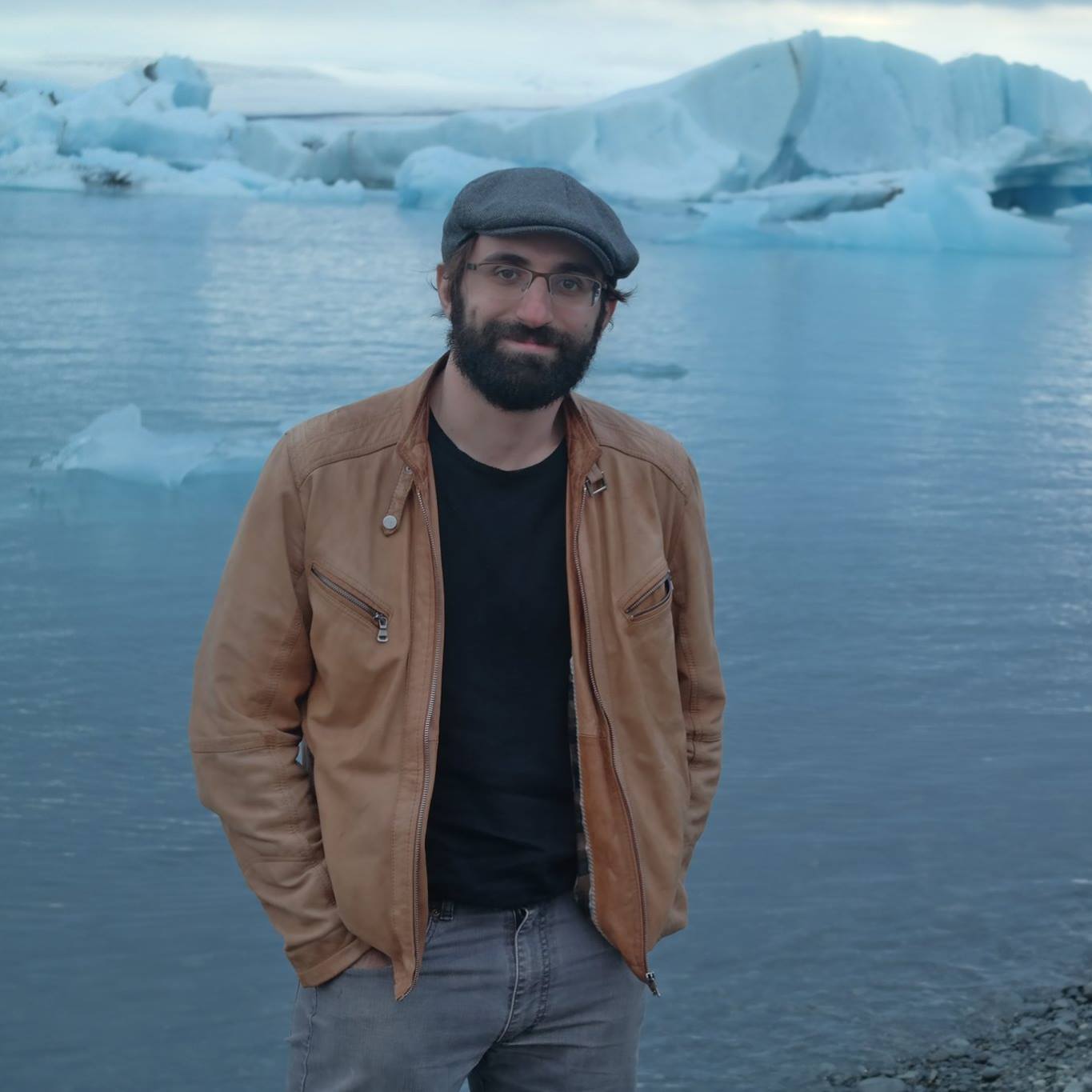Below some news about the team!
20th of May 2025 - Presentation at Pint of Science
It’s again Pint Of Science time! Antoine Grimaldi gave a very clear and interesting presentation about perception, visual illusion and hallucinations. With very clear (and funny) examples, Antoine explained how his work on belief propagation and circular inference explores hallucinations and perception in healthy humans as well as in schizophrenia. A big thank to the Brainbow association for the organization!
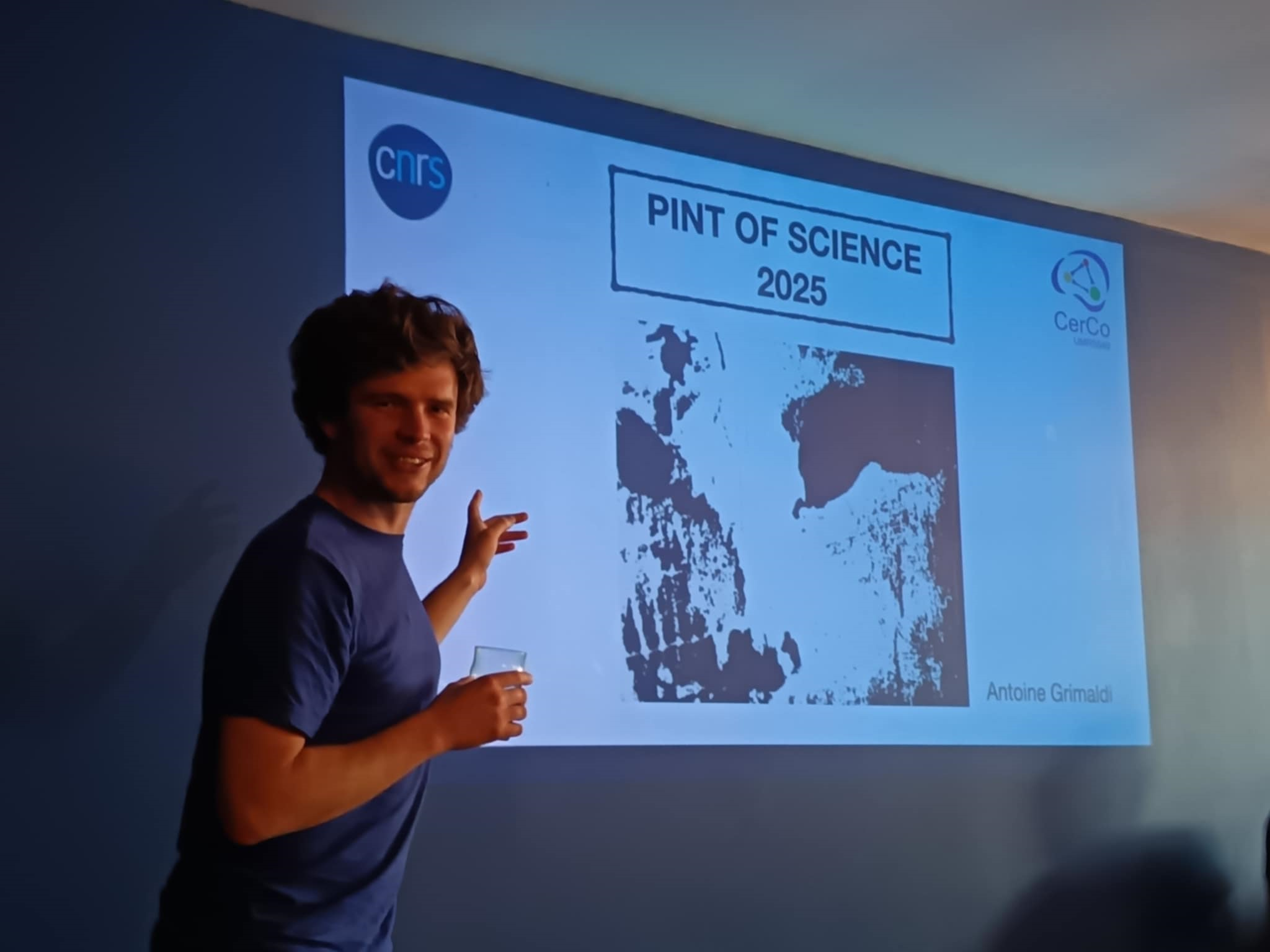
TEMPOMEGA: Caen’s workshop on EEG data analysis
On The 25-25 of March took place TEMPOMEGA, the first workshop on the processing of M/EEG data in Caen, organized by Thomas Hinault and supported by the FAsT (French Association for TIMING). Very excited to have joined this collaborative effort, providing a theoretical overview and a hands-on session on traveling waves methods.

Semaine du Cerveau
Thanks to the organizers of the ‘Brain’s awareness week’ for letting Benedikt Zoefel and Andrea Alamia presenting (in French!) about brain oscillations to the general public. It was quite exciting to carry out this event at the main library in Toulouse. After some theoretical introduction, participants could try and visualize their own brain waves with a protable EEG system. Looking forward to next year event!
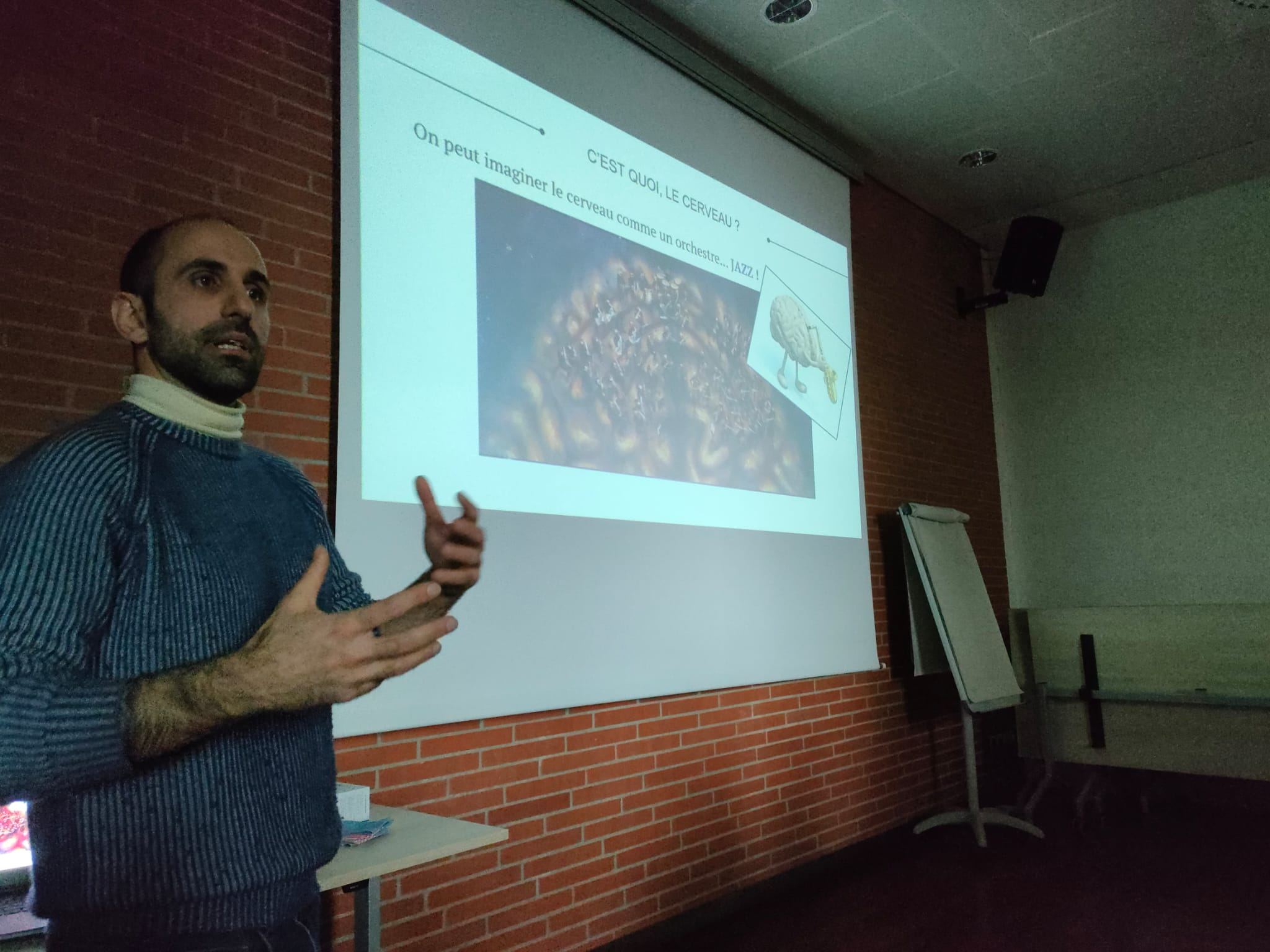
Featured paper in Journal of Neuroscience with Yifan Zeng and Paul Sauseng
The great work of Yifan Zeng, in collaboration with Paul Sauseng, was selected as a featured article in the Journal of Neuroscience. In this work, we investigated the relationship between traveling waves and visual working memory, disentangling the role of forward and backward alpha-waves. Learn more about it here.
Oscillatory brain waves workshop in Lausanne
It was great to attend and present at the oscillatory brain waves workshop in Lausanne, organized by David Pascucci and Maria Rigoni. The workshop was a great occasion to catch up on fantastic work from early career researcher. Looking forward for the second edition!
Traveling waves workshop
Very excited to have host the second traveling waves workshop in Toulouse. We were so proud to have as speakers Laura Dugué and Kirsten Petras (Université Cité Paris), Frederic Chavane (INT, Marseille), Matteo di Volo (Univeristé de Lyon), Mehdi Senoussi (CLLE, Toulouse), Gregor Thut (CerCo, Toulouse) and our team members Martina, Jakob and Andrea (CerCo, Toulouse). The workshop was enriched by two roundtable sessions about ‘growing up in Science’ and ‘managing a research group’.
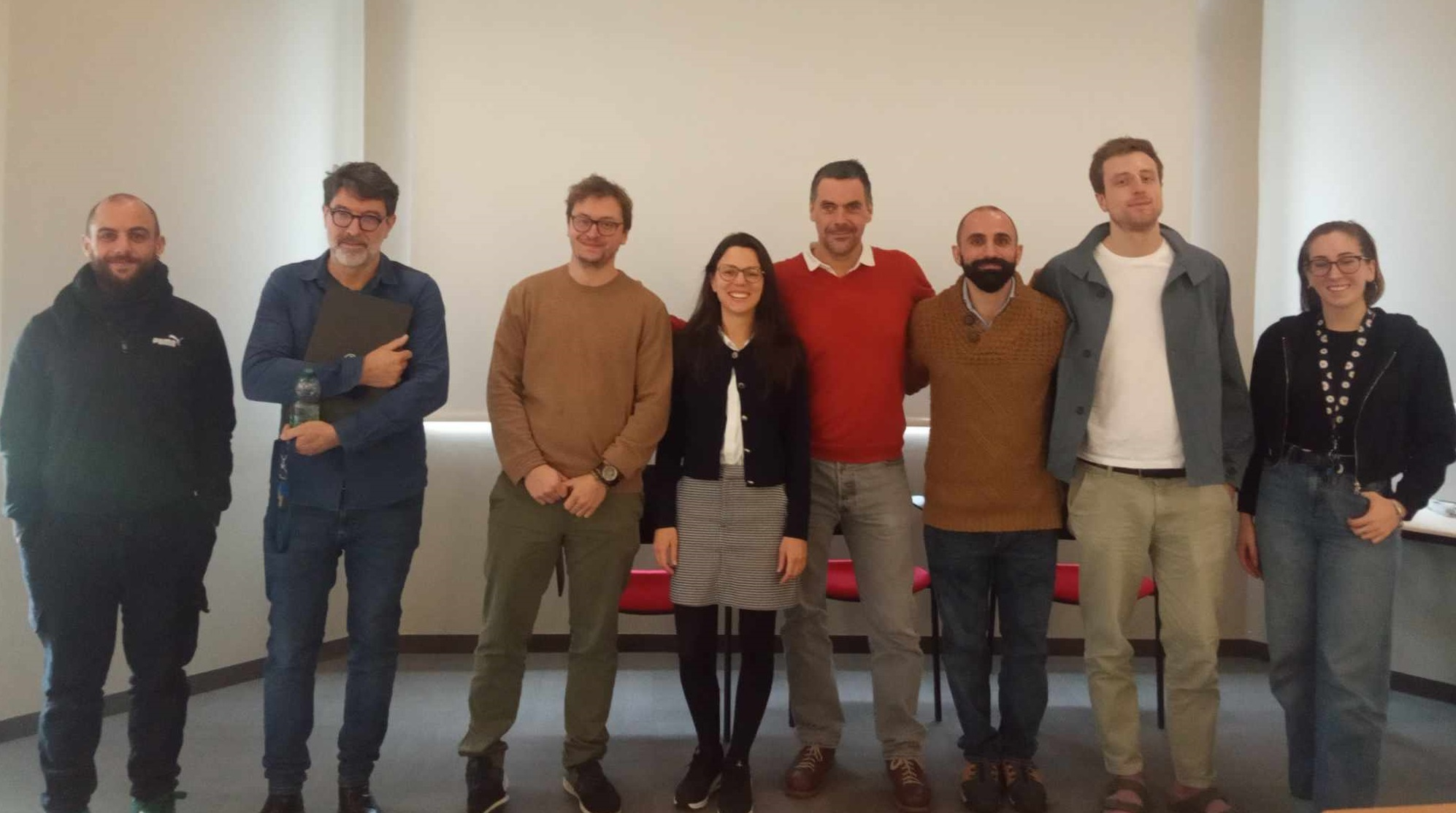
¡Jakob’s new preprint is out!
We are excited to present the latest work from Jakob: “a hierarchical multiscale model of forward and backward alpha-band traveling waves in the visual system”. We present a physiologically plausible model that bridges the gap between scalp-level wave patterns to mean-field activity at the laminar level in the cortex. In addition to explaining previously published EEG results, our model makes key predictions to be tested in future experiments. Check it out here.
October 2024
The team is growing again! Welcome to Antoine Grimaldi, who joined the team starting October 2024! Check him out in the people page.
25th-29th August 2024
Back to Cesena to join the SIPF conference. Great occasion to catch up with collaborators and friends in Cesena!

25th-29th August 2024
Traveling to Aberdeen with Martina and Jakob to present our latest work! It was cool to discuss traveling waves at ECVP 2024 (we particularly enjoyed the whiskey tasting..!).
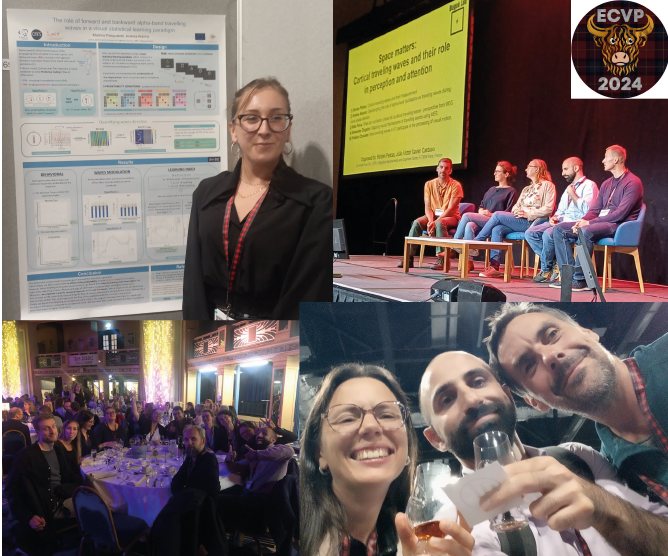
6th-9th August 2024
As every year, it was great to be back at CCN 2024 in Boston. It was also a great occasion to visit Matt Nassar and Thomas Serre labs in Providence!
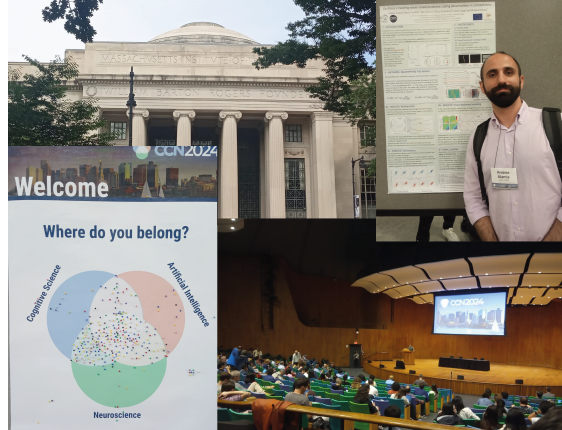
8th-10th July 2024
It was amazing to meet my friend and colleague Oleg Solopchuk in Hamburg, get a lot of feedback on our work, and visit the Jan Gläscher team! After doing the phd together in Bruxelles, Oleg and I found our scientific interests crossing again! Glad to be working together in this exciting collaboration.
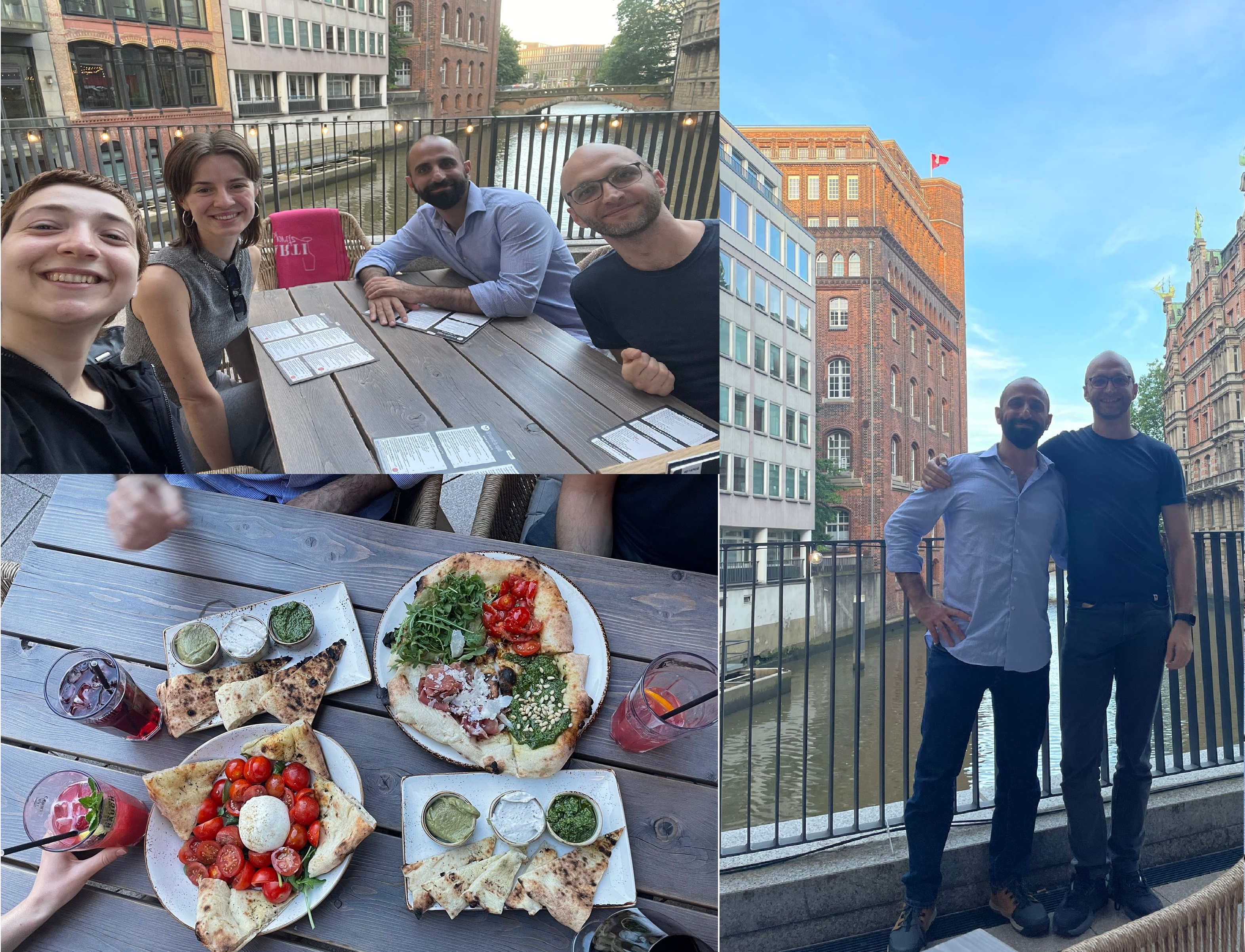
1st of July 2024
Inspiring workshop on « Imagerie mentale : évaluation et répercussions ». It was a great occasion to meet inspiring people and discover their works, besides thinking with them about how traveling waves may be affected by visual imagery. Special thank to Lucie Bouvet, Mehdi Menoussi, and Elodie Labeye for the invitation and organization!
17th of May 2024
Presenting our previous work at the CRNL in Lyon on machine learning and neuroscience, featuring -among others- Rufin VanRullen, Sabine Muzellec, Milad Mozafari and Bhavin Choksi: « Brain-inspired computer vision and AI-informed neuroscience». Big thanks to Matteo di Volo for the invitation and organization!
15th-9th April 2024
Extremely delighted to start a new collaboration with Vincenzo Romei and his amazing team in Cesena! It was really a pleasure to meet dedicated and inspiring people with so many interests in common! And of course, it’s always nice to go back ‘home’ in Italy… (the picture says it all!)
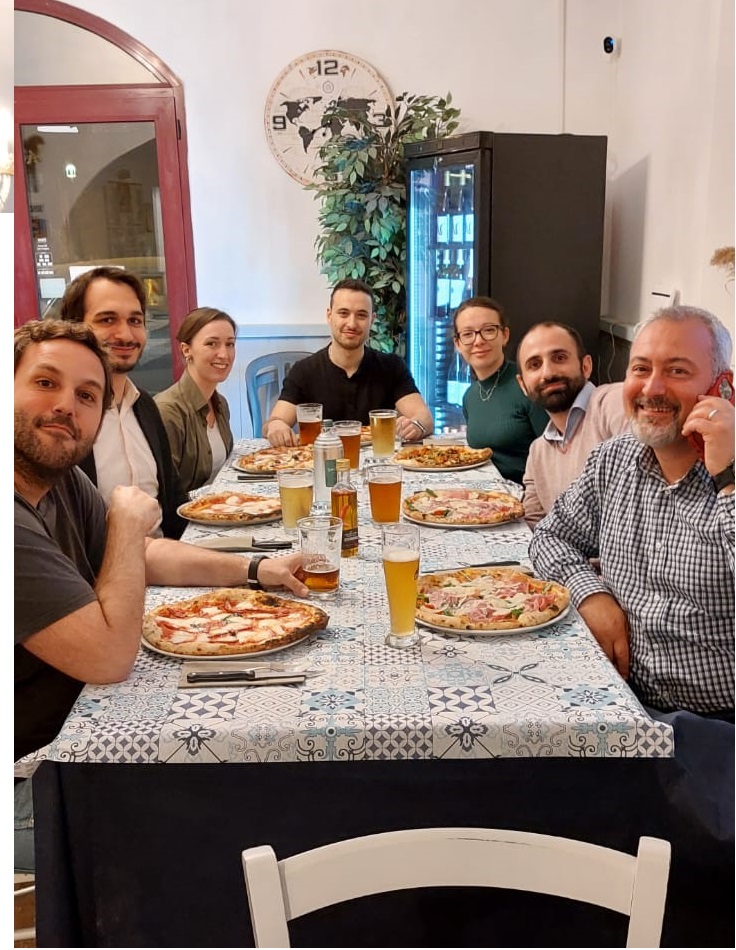
5th-7th Febrary 2024
Great time in Zurich, at the Paul Sauseng team’s retreat! It was great meeting all his amazing team, plus Vincenzo Romei and Daniela Gresch. Feeling particularly lucky and grateful to be able to talk Science and have fun with these amazing people!
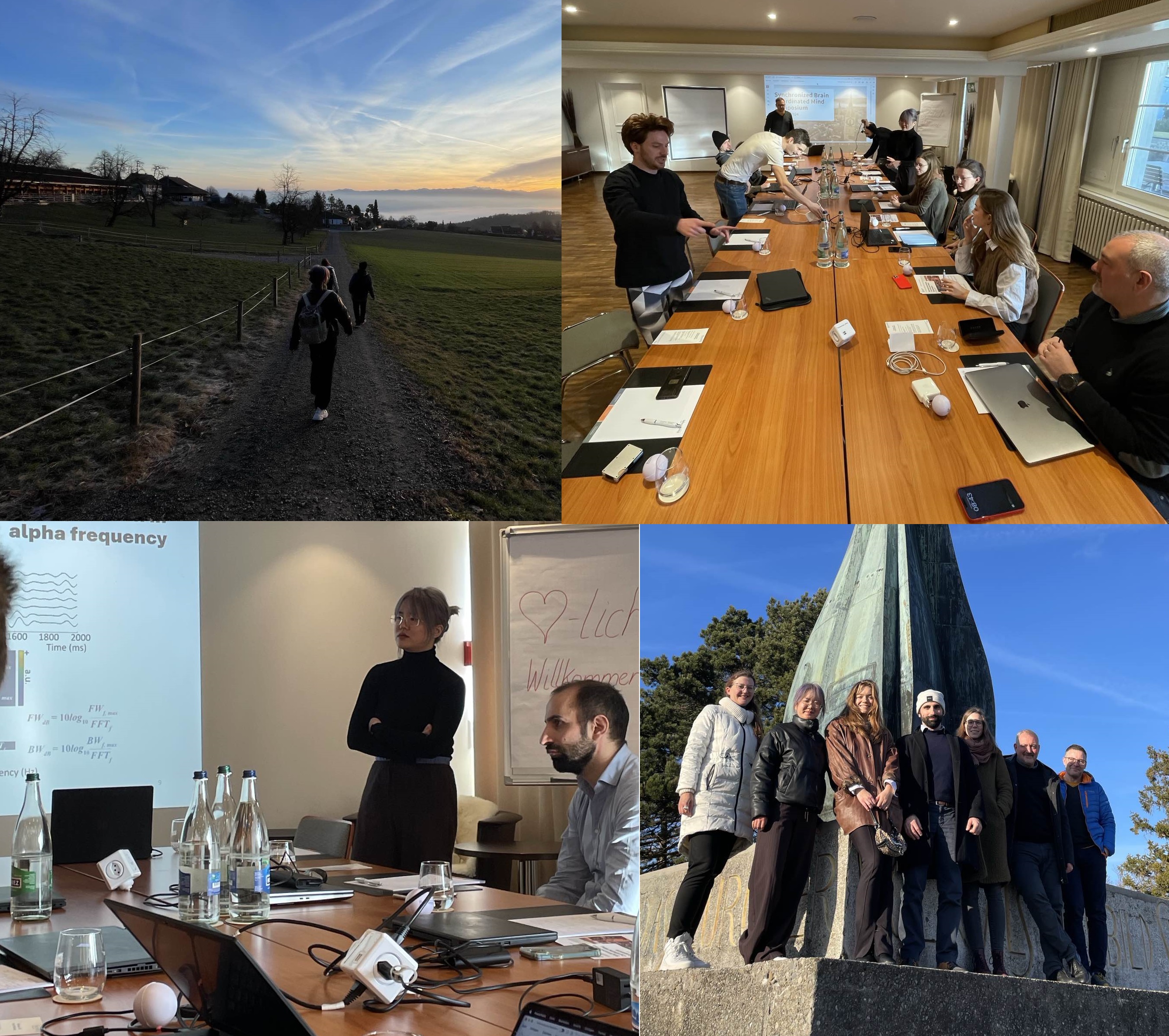
17th Janaury 2024
“Surfing Cognition like a traveling waves”, Andrea managed to successfully defended his ‘Habilitation à Diriger des Recherches’ (HDR). Particularly thankful to the jury members Martin Vinck, Peggy Series and Frederic Chavane: it was very fruitful to exchange ideas and get inspiration for our projects from all of them. In case you are having troubles falling asleep tonight, here the full manuscript.
27th-28th November 2023
It was great visiting the BCBL lab in San Sebastian together with Benedikt Zoefel. It’s always inspiring meeting new people and amazing scientists, and foster challenging discussions (special thank to Nicola Molinaro for challenging my views on Predictive Coding around a nice dinner). Another special thanks to Manuela Ruzzoli for her generosity and hospitality (and her amazing perseverance on a Sunday afternoon fighting against French train troubles). Looking forward to meet again soon (maybe in Toulouse..!).
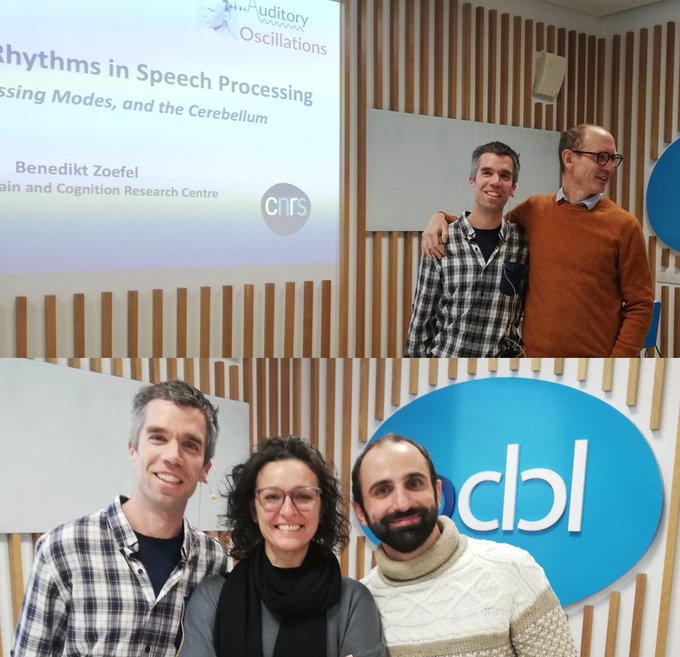
October 2023
The team is growing again! Martina joined the team as a phd student in October, working on both computational and experimental projects on traveling waves and predictive coding. Check her out in the people page.
19th of October 2023 - CuttingEEG talk in Lyon
It was a great pleasure to join the Cutting EEG garden in Lyon for a nice workshop on Neural Communication, organized by Mathilde Bonnefond, with Matteo di Volo and Julien Vezoli as speakers. Beside the interesting scientific interactions, it was very inspiring to be part of one of the first distributed conference ever, alternating online events with ‘live’ ones. Minimizing CO2 emissions while connecting with the local community has never been easier!
24-27th of August 2023 - CCN2023 conference in Oxford
It was great to attend our regular, annual meeting at CCN in Oxford this year! Beside presenting our work with Martin Giurfa’s team about modeling honeybee learning in trace conditioning, I was particularly glad to join the diversity lunch, and the workshop on climate action. It’s great that a conference dedicates some time for these topics, and it feels good to share and discuss these issues with other fellows in the community. Kudos and gratitudes to the organizers for putting all of this together!
(in the image below, I placed one of the yellow pin… but which one?)
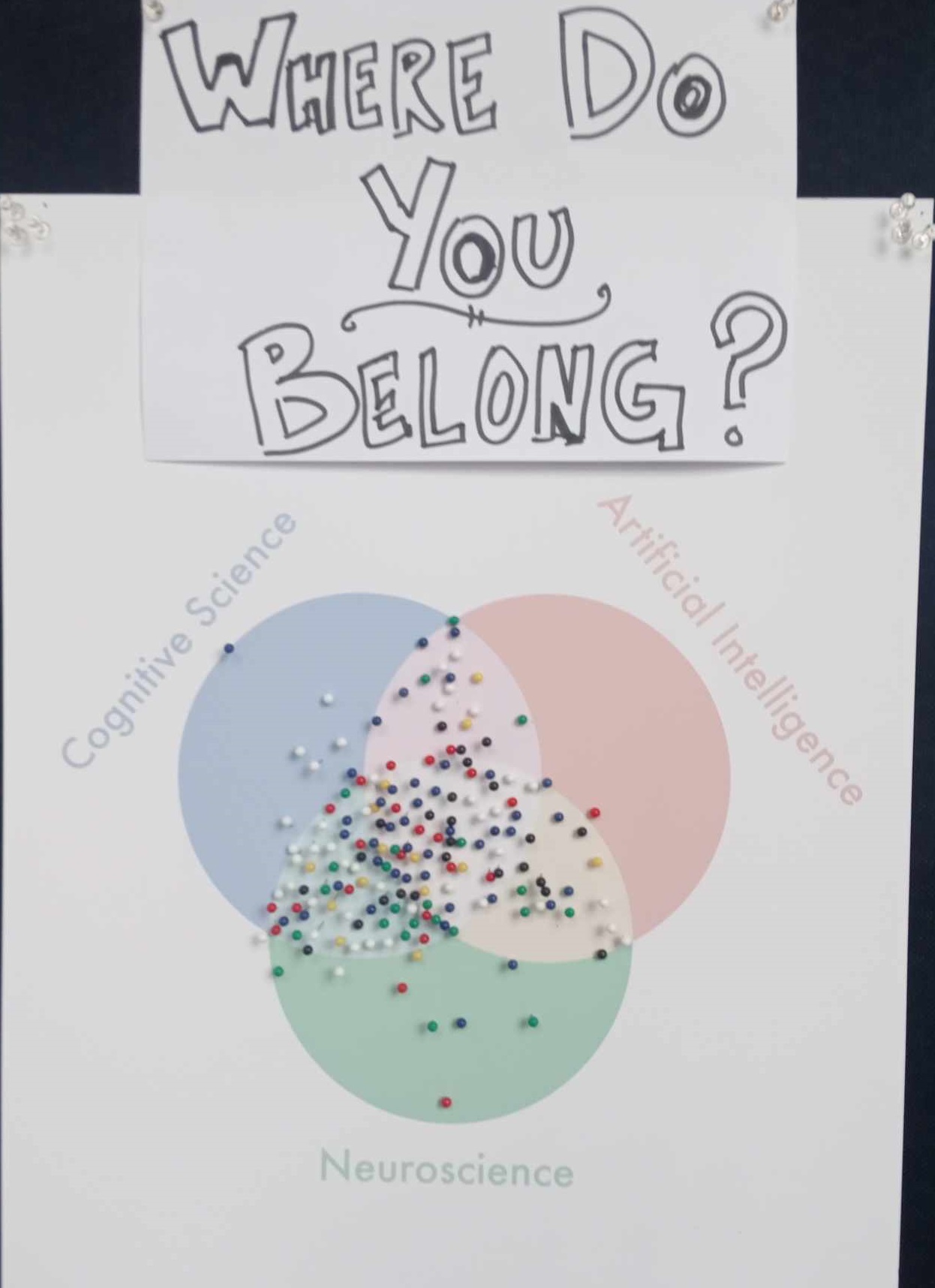
July 2023
The team is growing! After Leslie and Bhavin, also Xiaoqi and Jakob joined the team to unveil the link between traveling waves and predictive coding. Check them out in the people page.
29th of June 2023 - IOP conference in Geneva
Presentation of our latest work on alpha waves and attention at the International Organization of Psychophysiology (IOP). It was great to be part of the Symposium on ‘The role of ALpha Rhythm in Perception, Attention and Vigilance’ with Prof. Alberto Zani, Susanna Lopez, David Pascucci and Niko Busch.
22nd of May 2023 - Presentation at Pint of Science
Andrea presented (in French!!) some of the team’s work about the connection between Neuroscience and Artificial Intelligence. The main idea was to show how the two fields can benefit from each other. Big thank to the Association Incognu for the great organization!
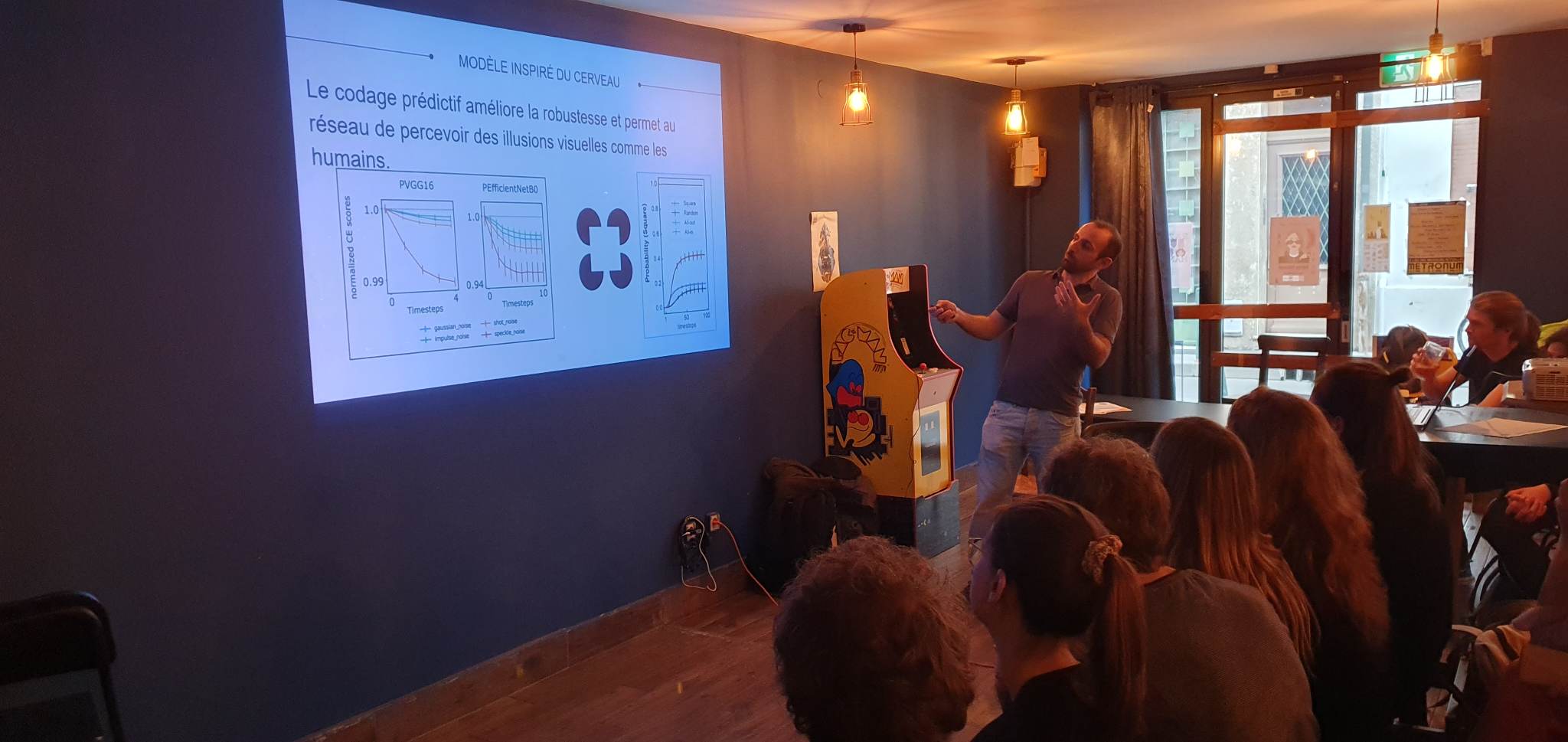
May 2023 - A Traveling Waves Perspective on Temporal Binding
An interesting commentary in Journal of Cognitive Neuroscience written with Rufin, where we explore how traveling waves may be involved in Temporal Binding. More broadly, we had fun envisioning different scenarios, disentangling travelling and standing waves, and cortico-cortical and thalamo-cortical interactions in the generation of travelling waves. Here the paper.
Febrary 2023 - Distinct roles of forward and backward alpha-band waves in spatial visual attention
New paper in eLife, where we explore how traveling waves are modulated by visual selective attention. Analysing three different datasets, we were able to disentangle alpha-band top-down and bottom-up traveling waves, demonstrating that they are possibly involved in different mechanisms. Here the paper, with the precious help of Malo and Lucie, and the collaboration of Rufin VanRullen.
Novemeber 2022 - ERC-Starting Grant OSCI-PRED funded!
We are thrilled to announce that the OSCI-PRED project was funded for around 1.4 milion euro by the European Research Council! The projet will officially begin on March 2023 for 5 years.
You can find more information about the project here
October 2022 - On the role of feedback in image recognition under noise and adversarial attacks: A predictive coding perspective
New paper in Neural Networks, where we investigated the role of the feedback in deep neural networks using a Predictive Coding implementation. Building on our previous work (using the library ‘Predify’, published at NeurIPS 2021, check it out here), we show how the hyperparameters controling the amount of feedback varies as a function of the noise in the image. We believe these results will be of interest for both Computer Scientists and Neuroscientists. Here the paper, in collaboration with Milad Mozafari, Bhavin Choksi and Rufin VanRullen.
